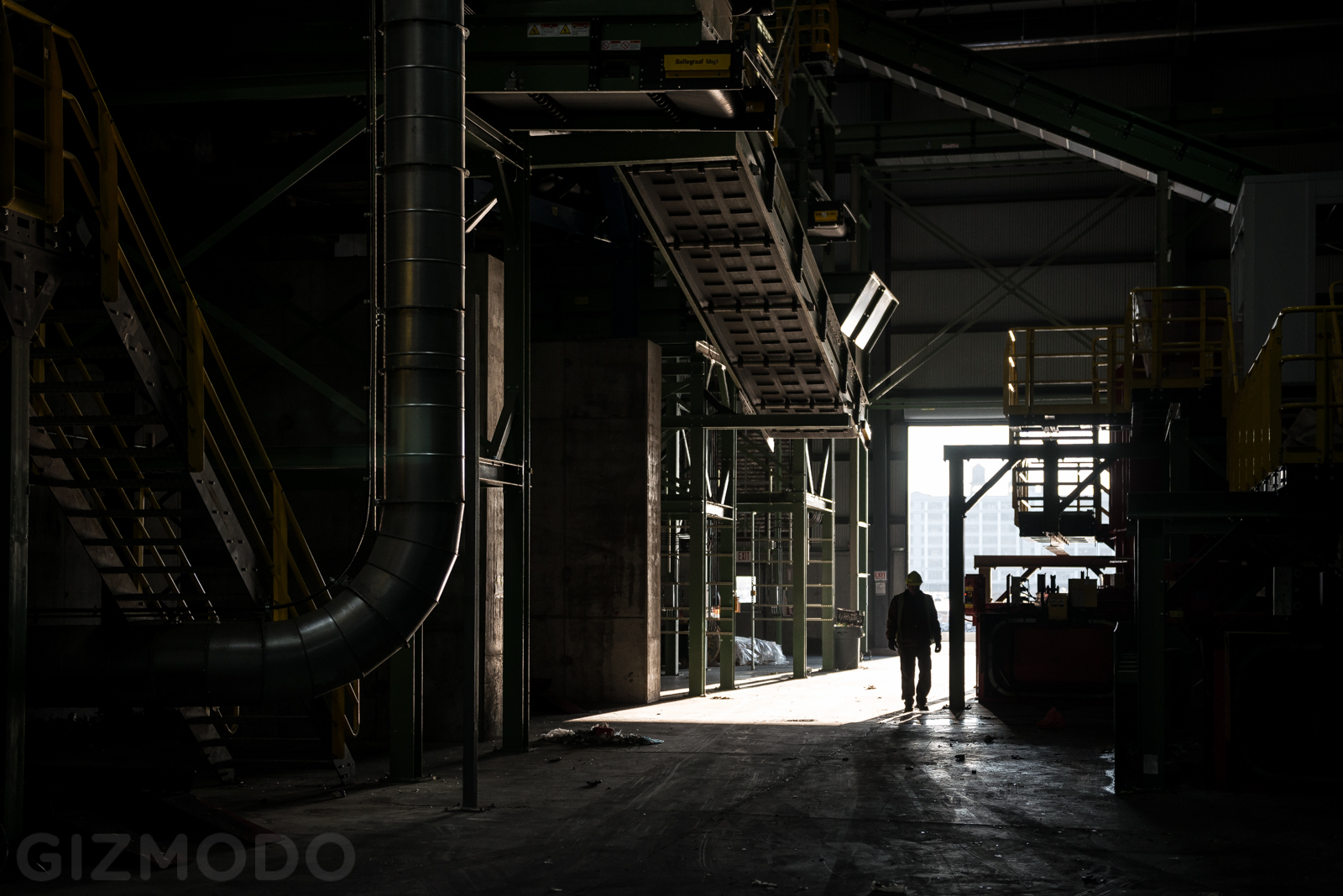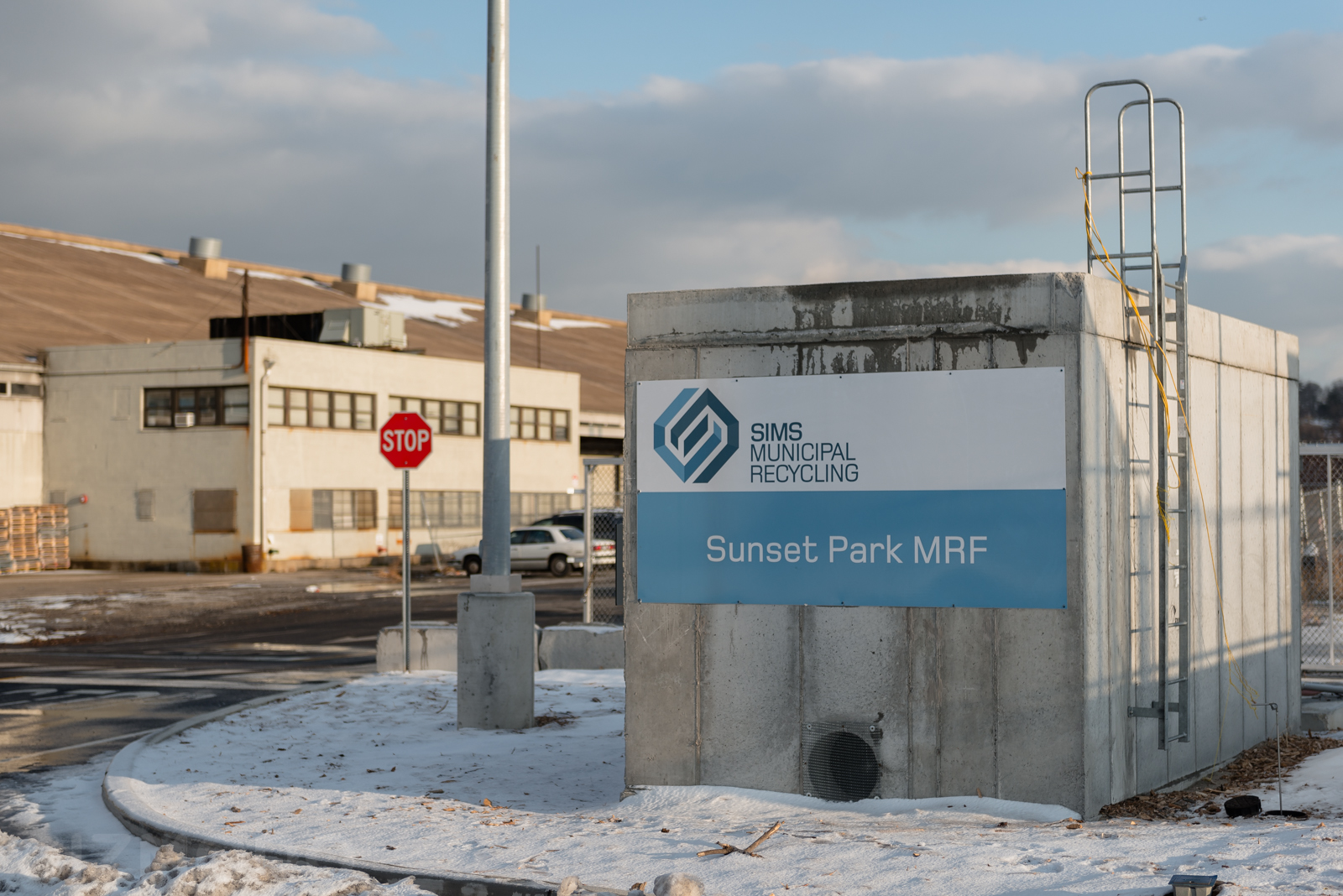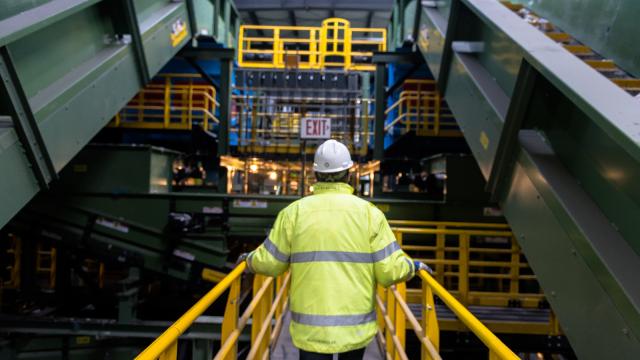As of last month, New York City’s Sunset Park waterfront is home to the largest commingle recycling facility in the US. After its inaugural run on opening day, the facility shut down for some final tweaks and testing before it opens full time. During this period of maintenance, Gizmodo visited the new facility for a private tour of the process that materials go through in the new location.
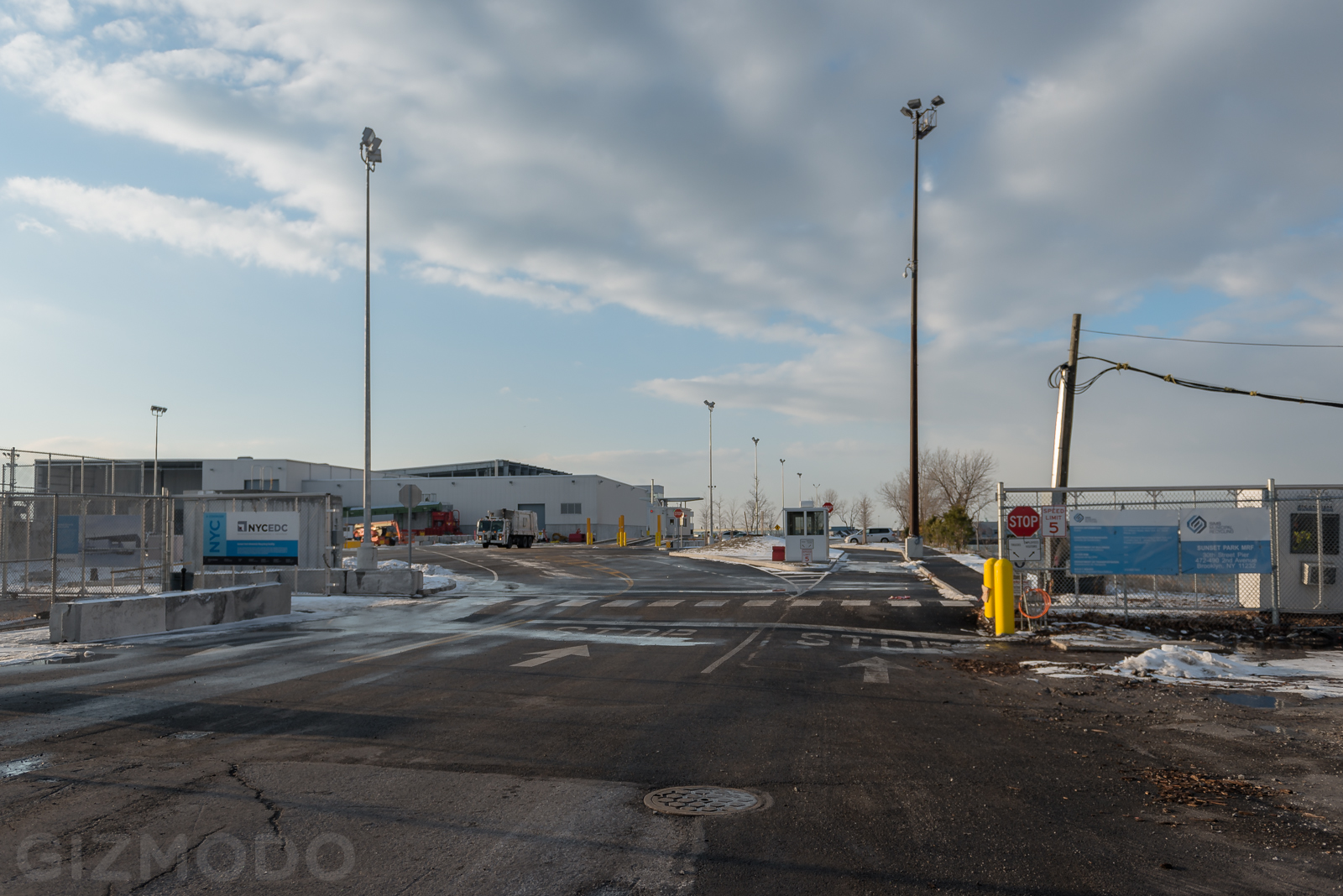
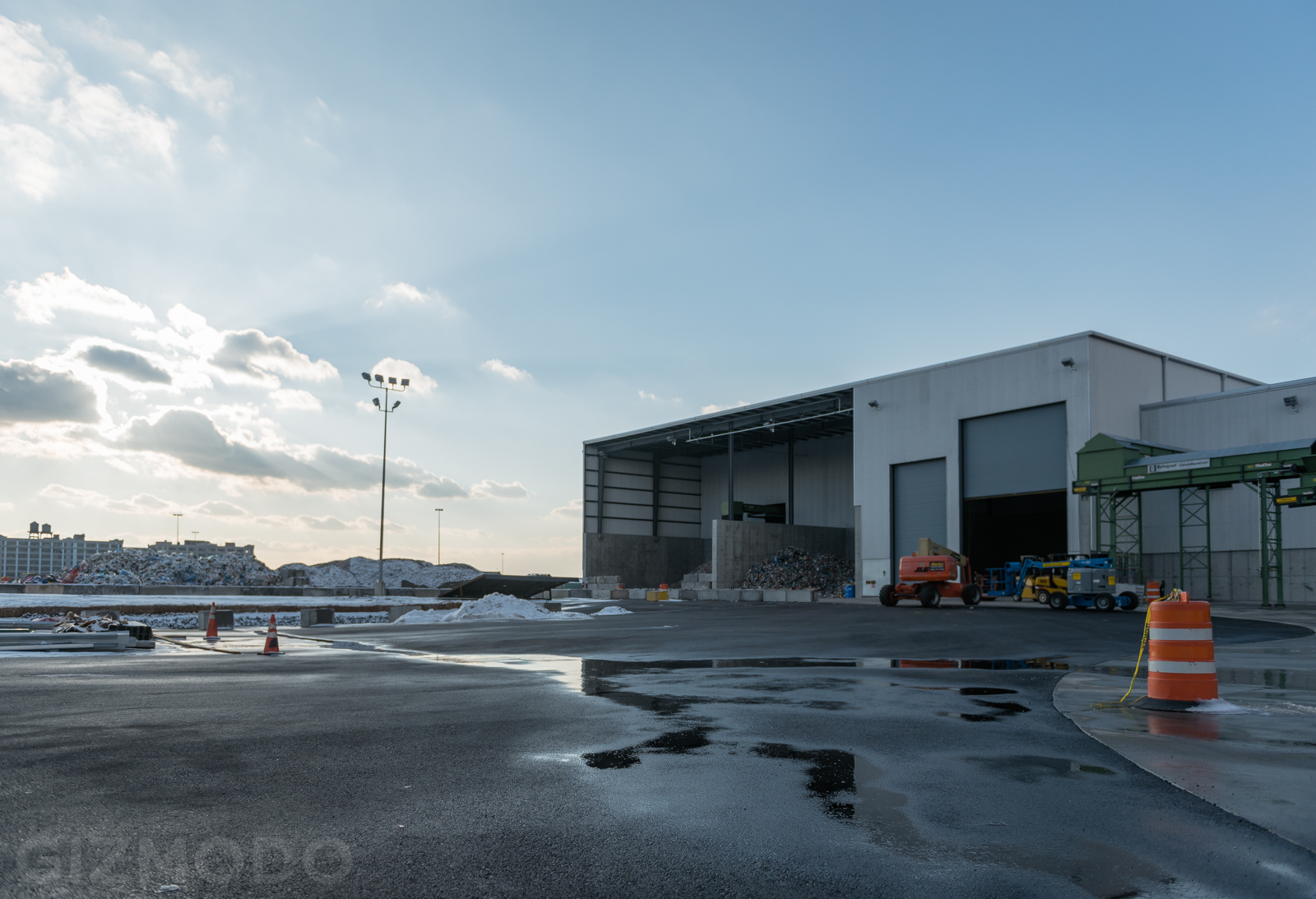
Tom Outerbridge, the facility’s general manager, took me on a walking tour of the entire complex. In addition to being a recycling mecca, the Sunset Park MRF is home to several rooms that will become a learning center dedicated to educating children about the process of recycling and its importance in the world today.
Sunset Park MRF was built on top of what used to be the 11 acre NYPD impound lot, on ground that consists of four feet of recycled glass and stone leftover from the Second Avenue Subway project. As we walked to the first stage of the recycling process, we passed islands in a parking lot filled in with bits of the same recycled glass and stone found beneath the facility. Raising everything four feet helped to avoid any problems Hurricane Sandy caused for the rest of the waterfront.
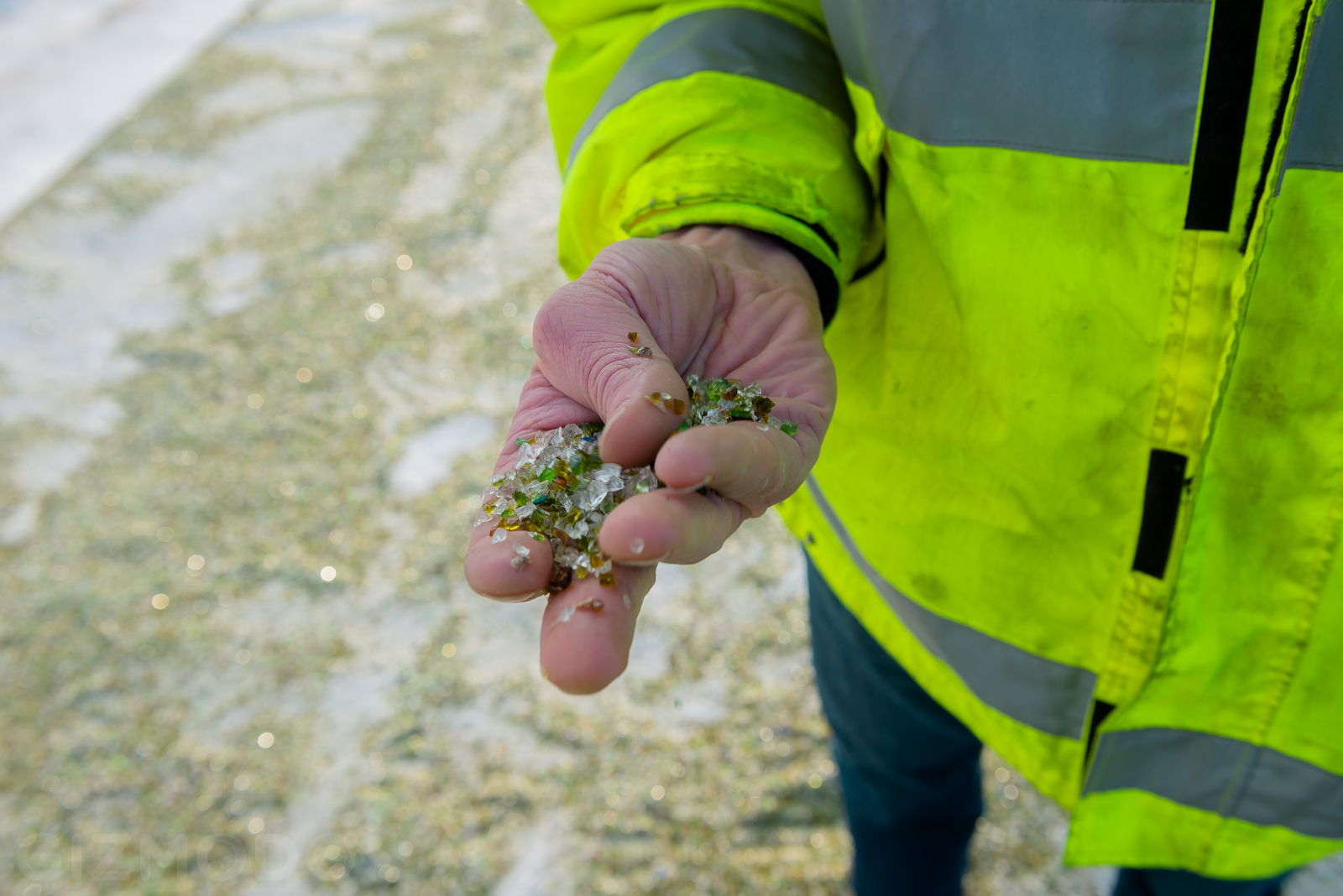
Drop-off
The Sunset Park MRF services barges, trains, and trucks to accommodate as much import and export of recyclable materials as possible. When a vehicle enters and exits the facility, it gets weighed to calculate the exact material exchange.
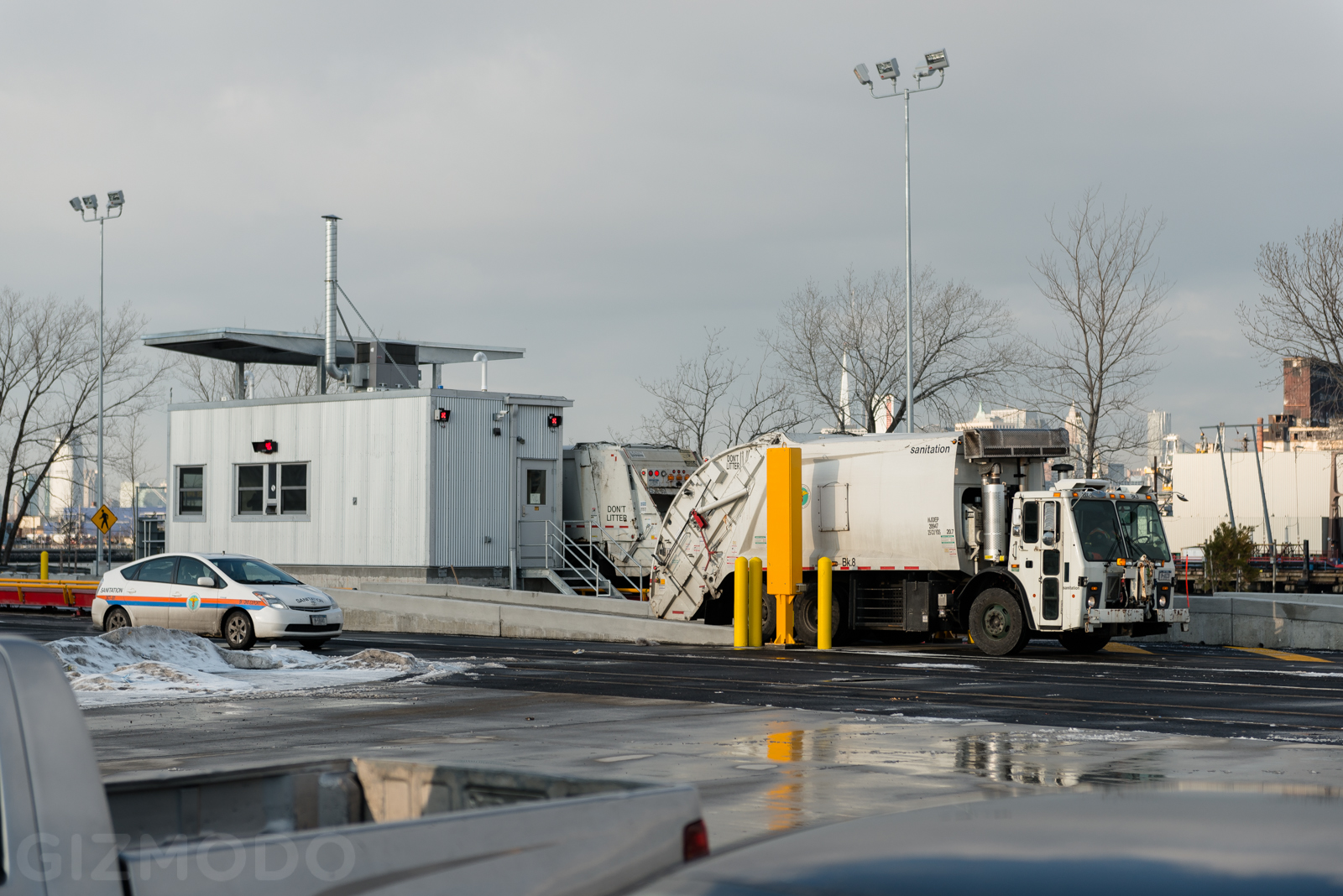
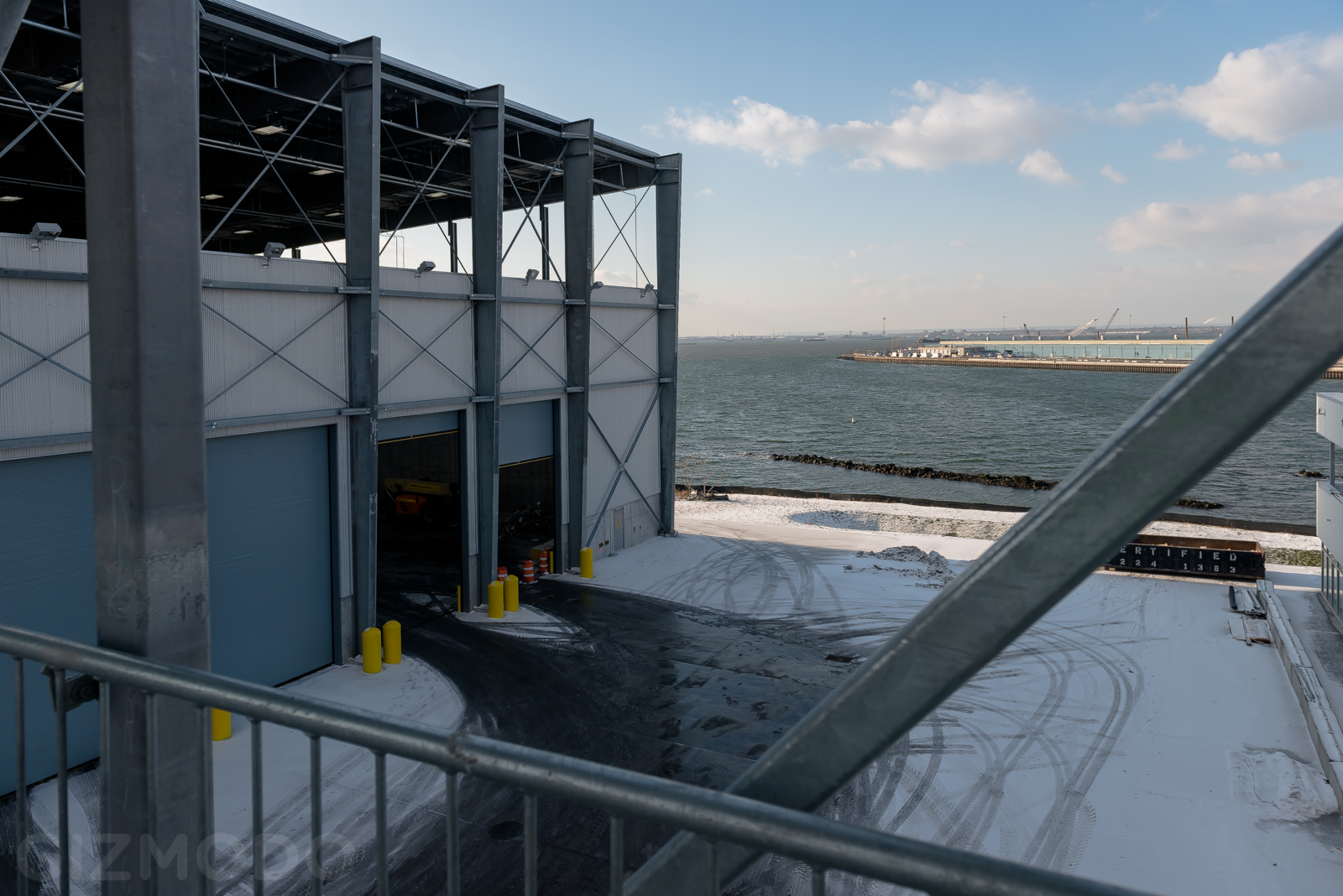
Trucks drive into the back of the facility where materials are dropped off. In the receiving bay, massive amounts of plastics, metals, and glasses are dumped, which get pushed into a conveyor system much like a funnel for the rest of the facility. Barges pull into a slip parallel to the receiving bay, where their weight is measured by the displacement of water. It is then unloaded.

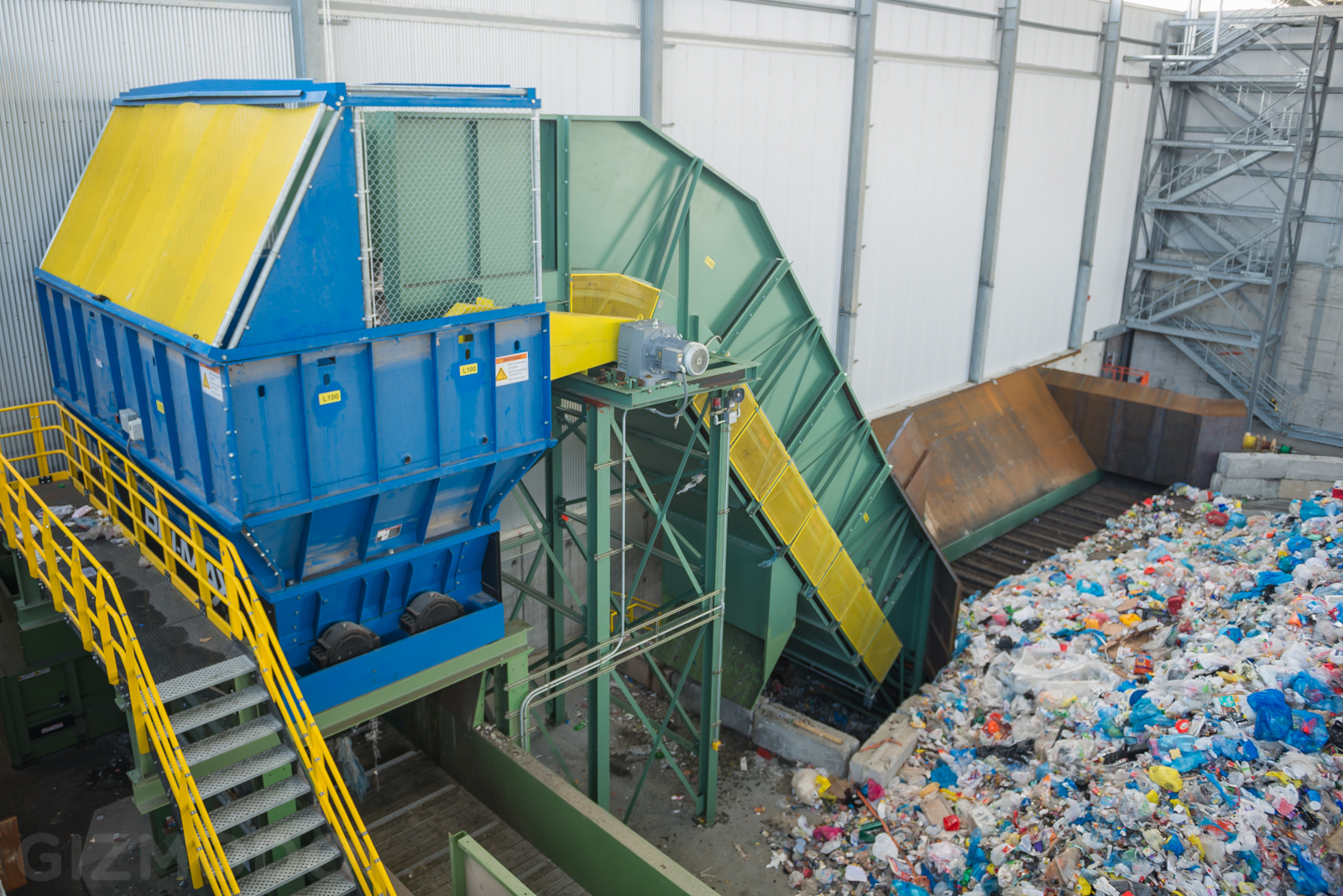
Sorting
After the materials go through the initial Primax Shredder, they make their way into the main sorting room: a mass labyrinth of conveyor belts, drum magnets, optical sorters, ballistics separators, and more heavy machinery than my eyes had ever seen. It’s industrial porn and it looks like something out of a science fiction movie.
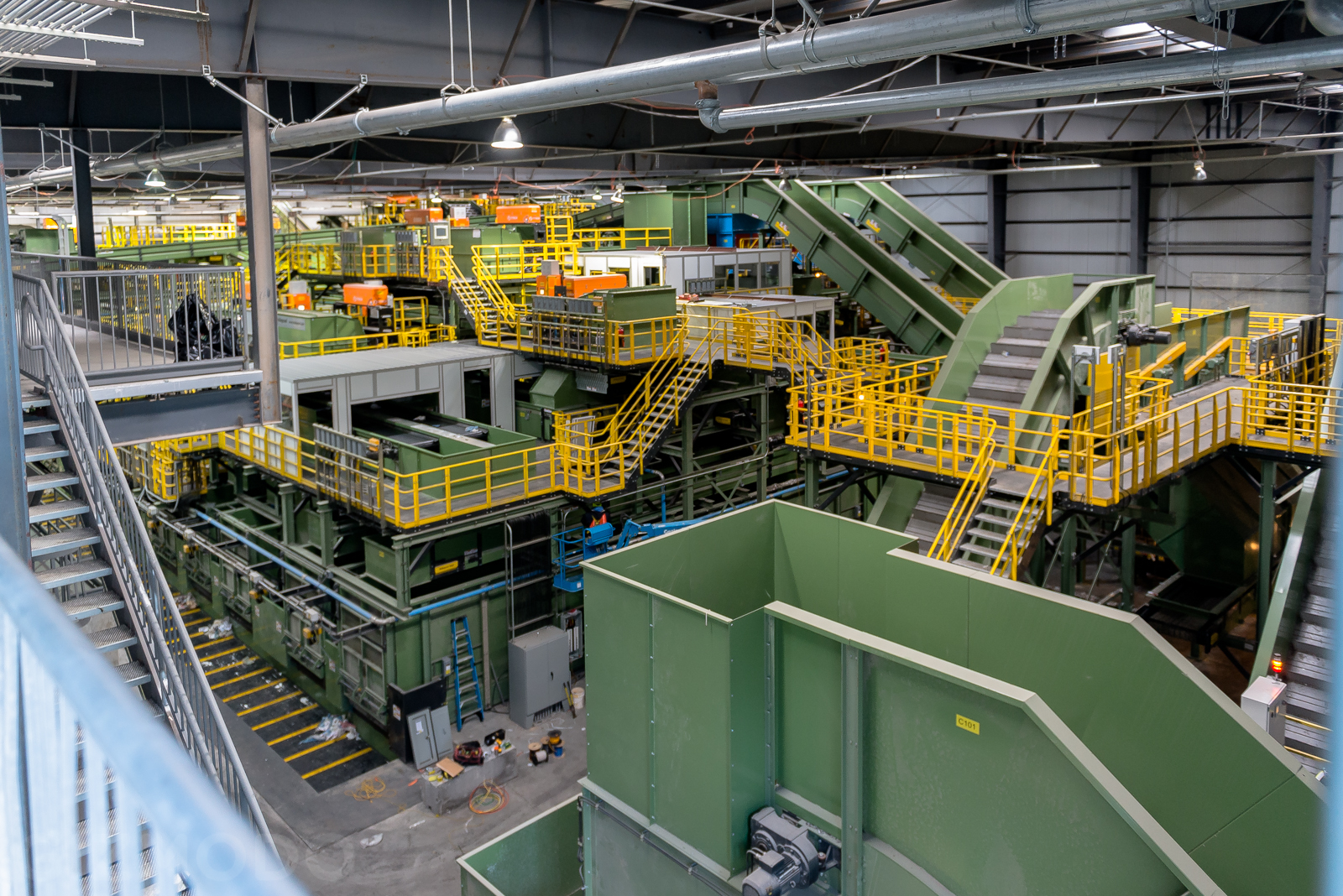

Stepping down from the observation deck and into the maze of hallways and staircases between the machines, you get a sense of how intricate and efficiently consolidated the space is. Recycleable materials travel vertically, horizontally, back and forth between different sensors and sorters before they end up neatly packed in cubes.
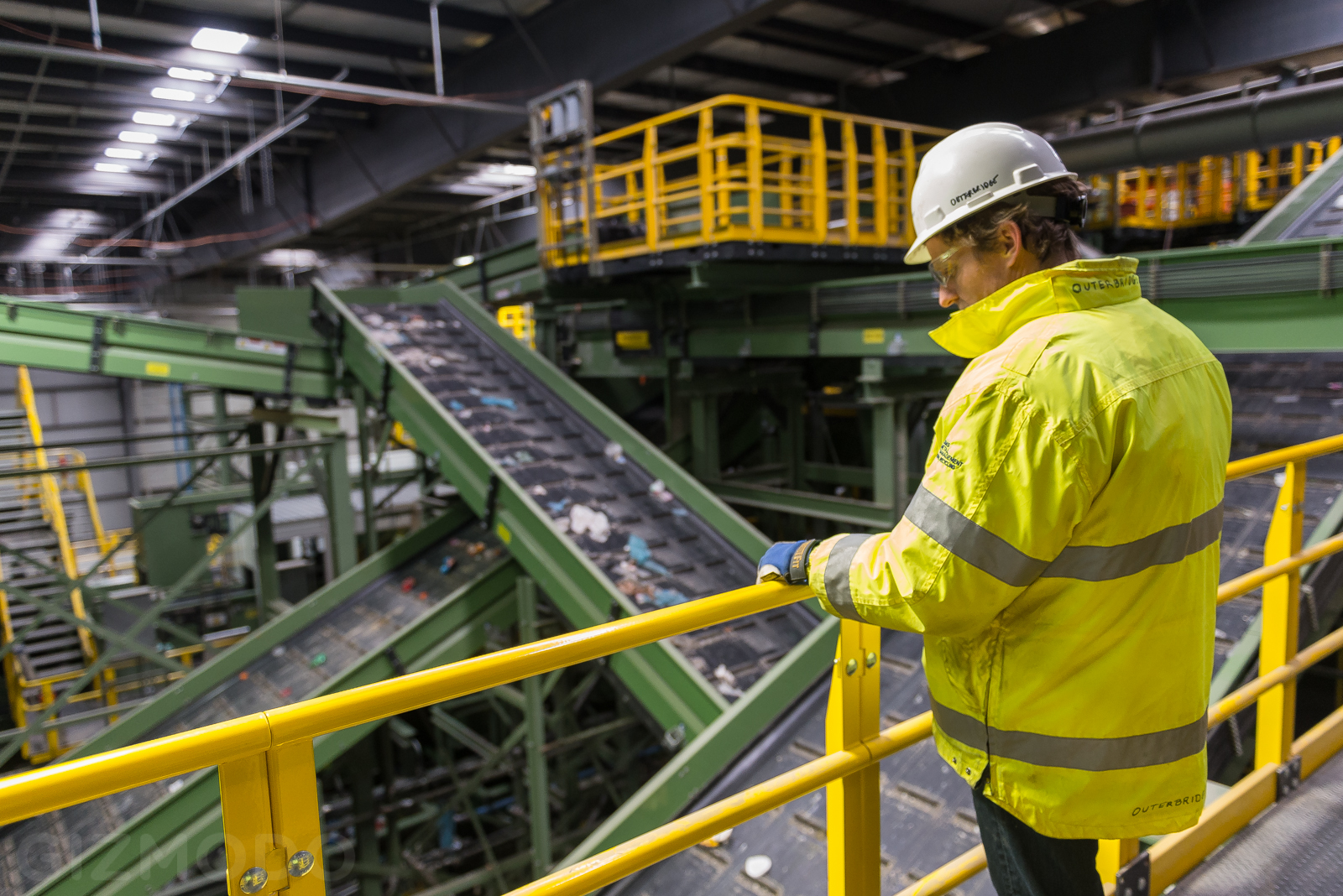
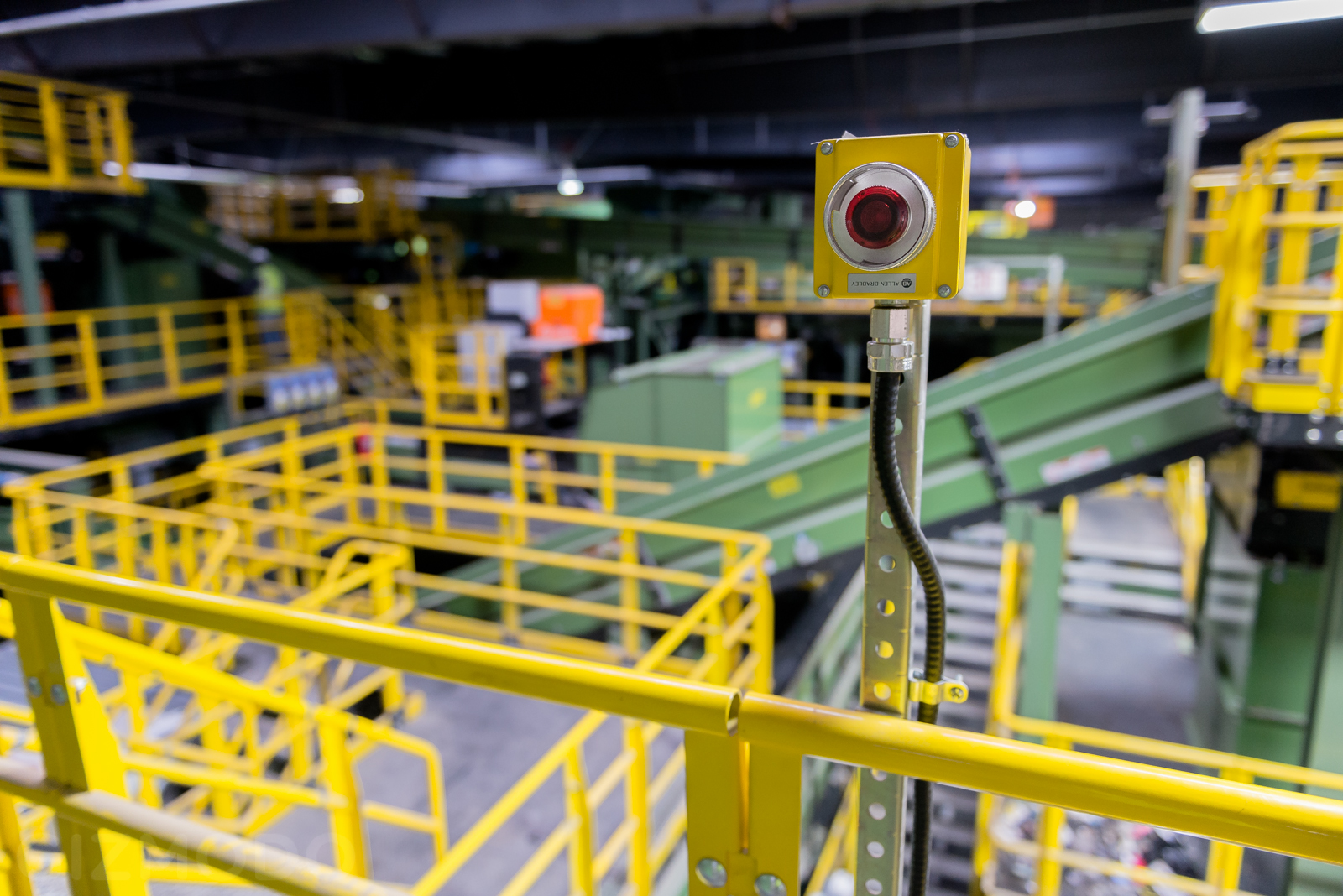

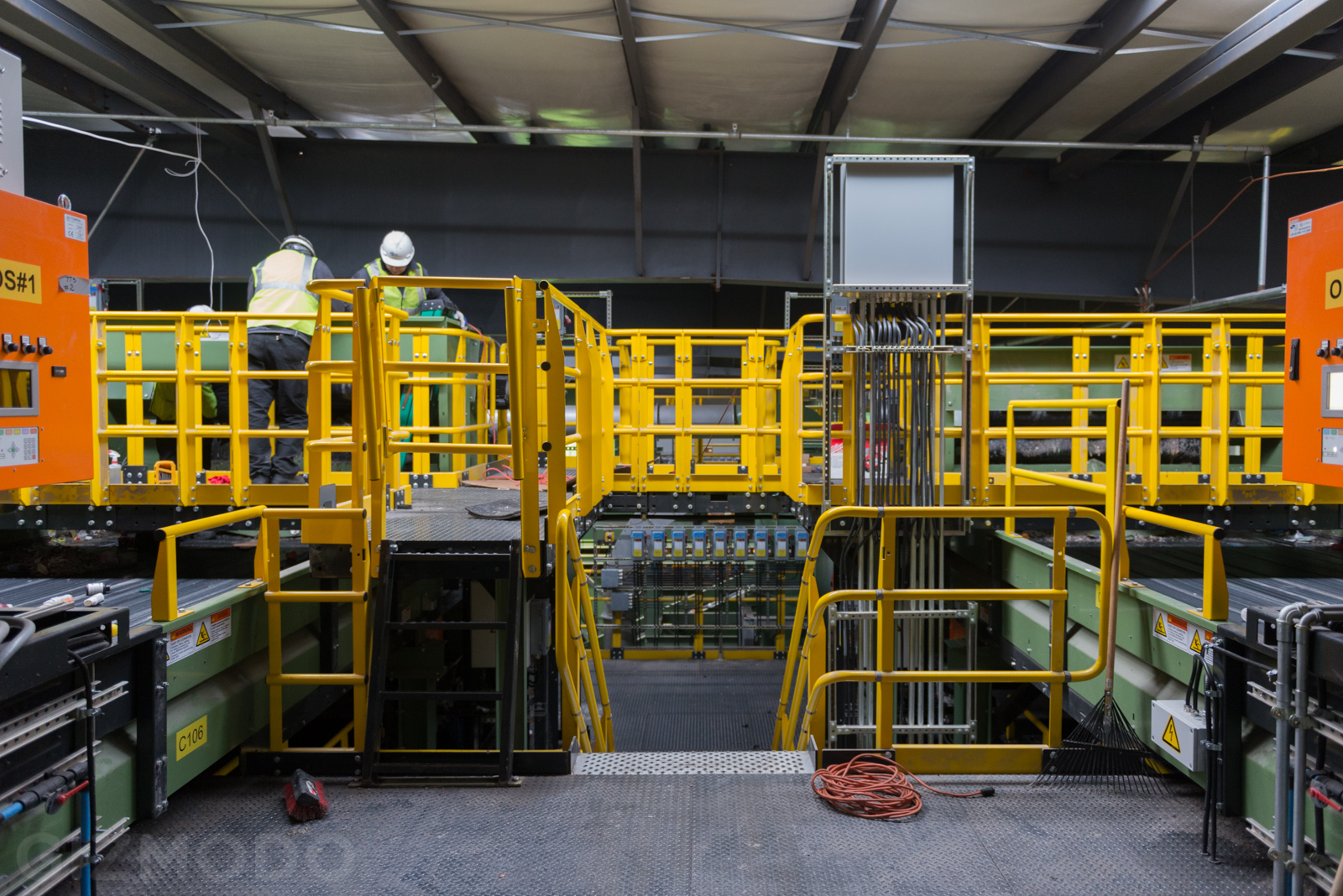
Some of the recyclables make their way to Drum Magnet Separators made by a company called Steinert. As materials pass under it, metals capable of being picked up by the magnet get separated from the rest of the waste. The drum magnets are so strong that they’re capable of lifting entire bed frames that somehow make their way through.
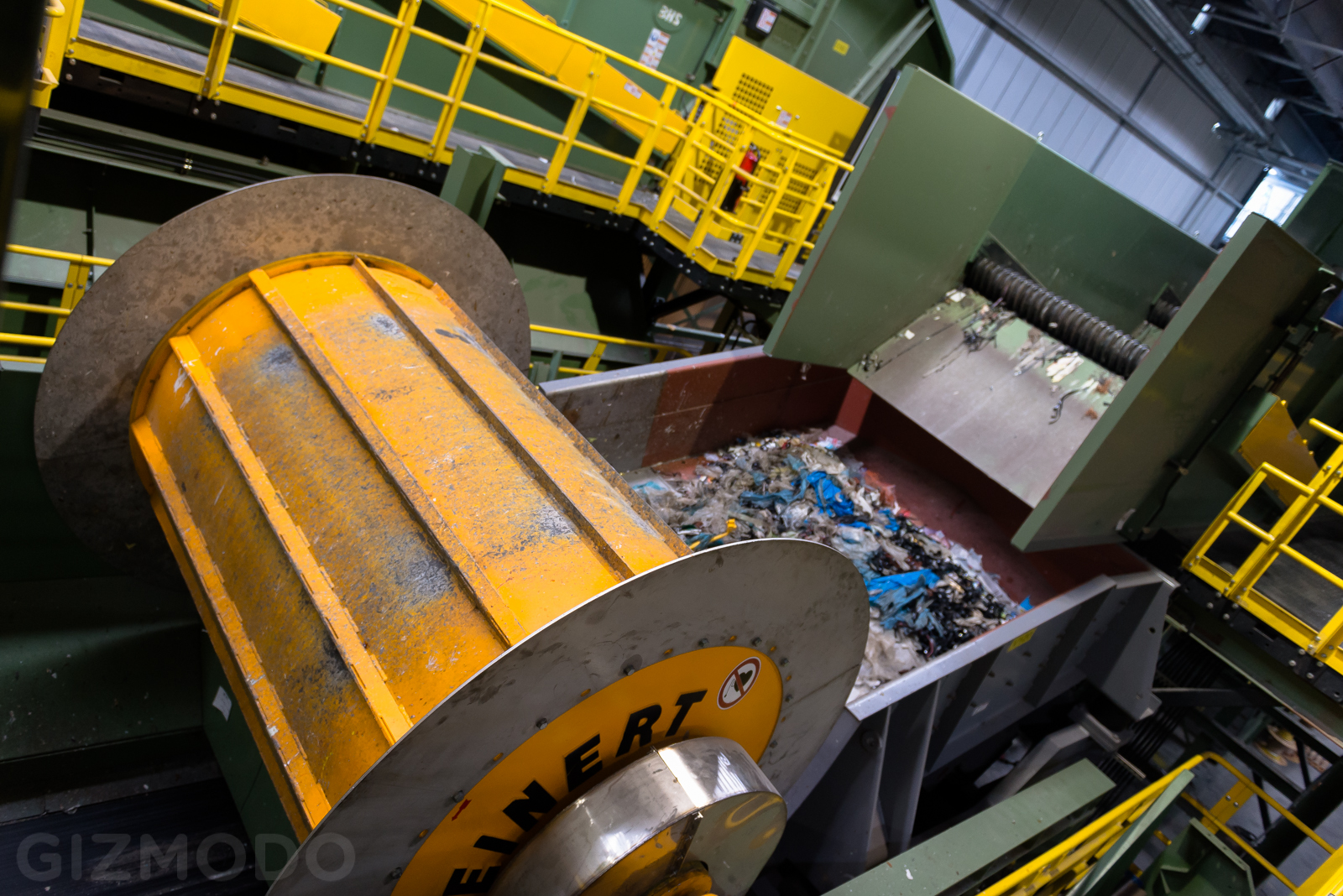
Stadler Ballistics Separators differentiate cardboard and paper from the rest of the materials. The machine is massive but completely enclosed in a shipping container-like box. The only way to see inside was through a level-activated peep hole, much like a submarine.
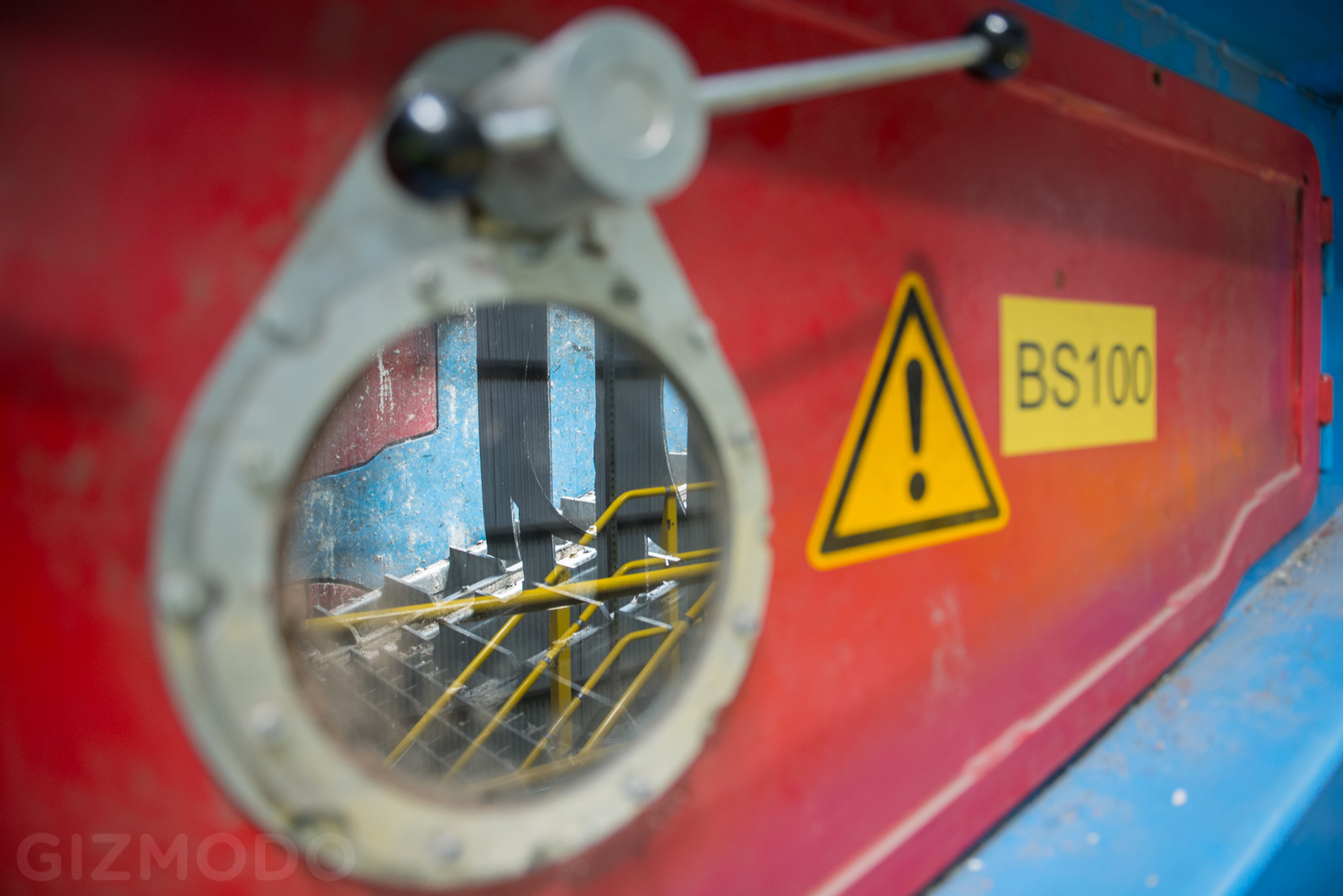
The facility also employs several Titech Optical Sorters. These machines use sensors to detect whether plastic, glass, or other materials pass through it and then uses blasts of air to push them into certain containers for further sorting.
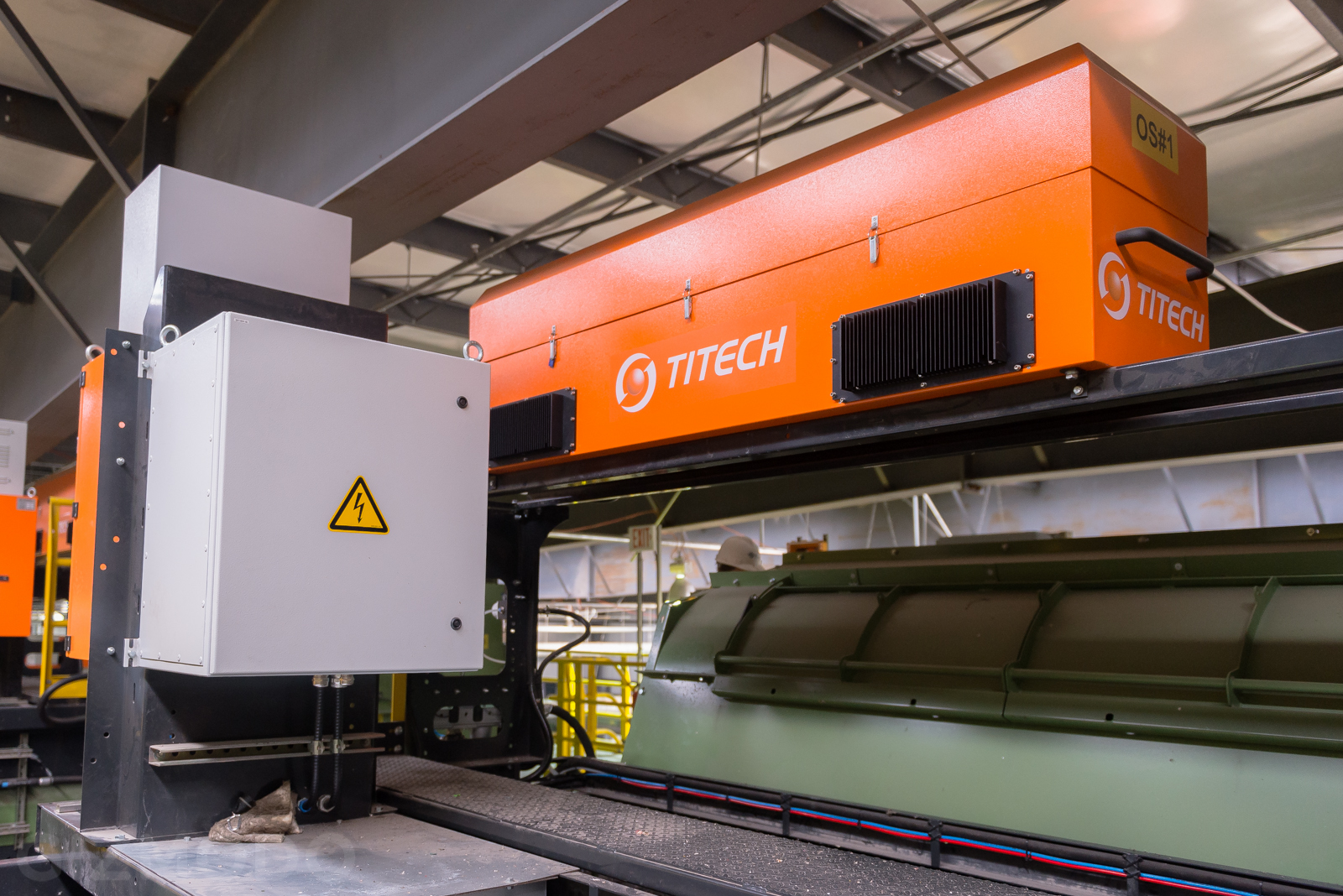
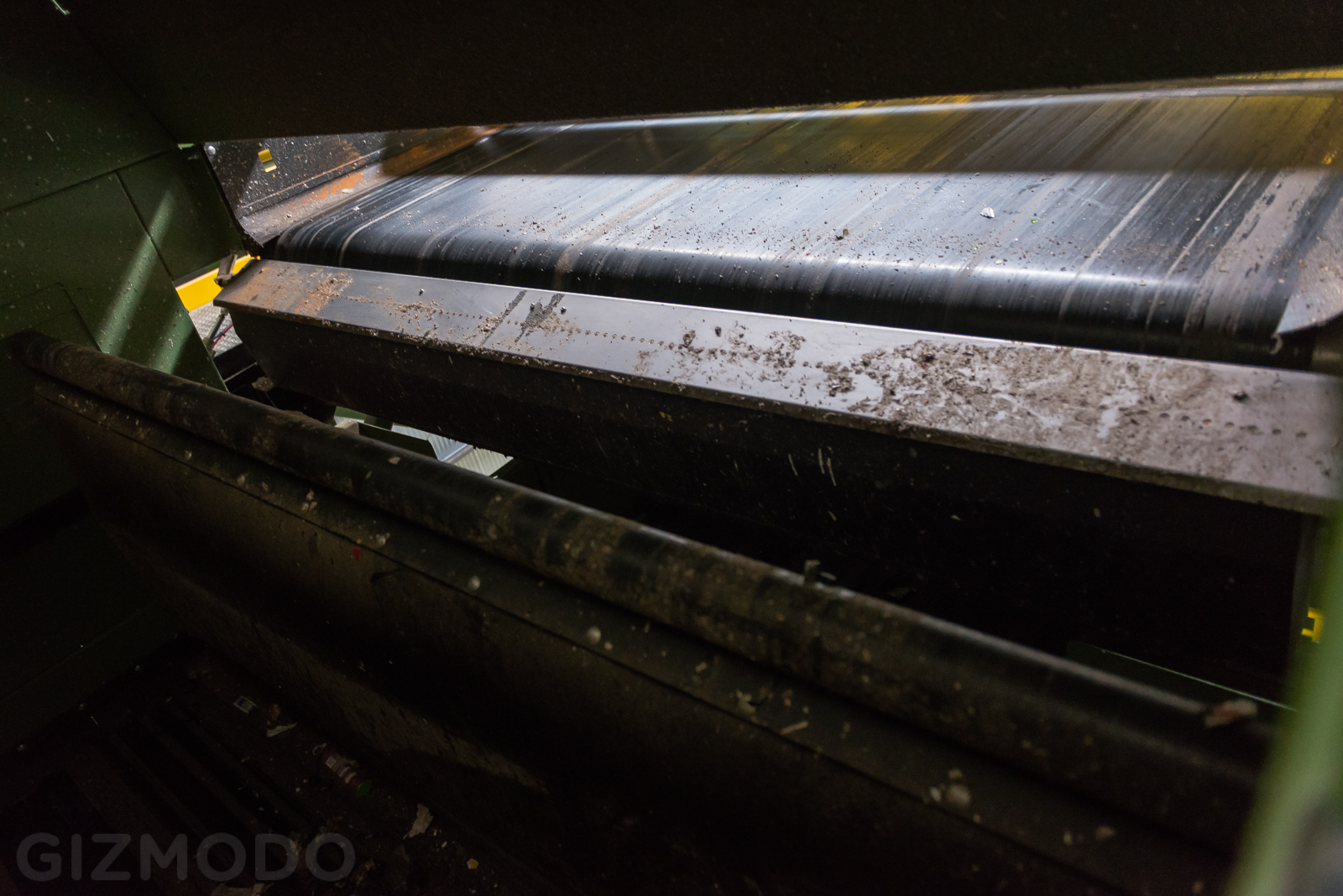
The Trommel Screen is a massive drum shaped machine that removes tin cans from the rest of the materials and sends them to a baler.

Baling and Pickup
All materials inside the facility end up inside specific containers after the intricate sorting process is done. These containers then dump their cargo onto a conveyor belt that feeds it all into a Harris Baler. The baler takes those loose recyclables and packs them into neat little cubes. These cubes are sold to over 20 different clients who then reuse the materials.
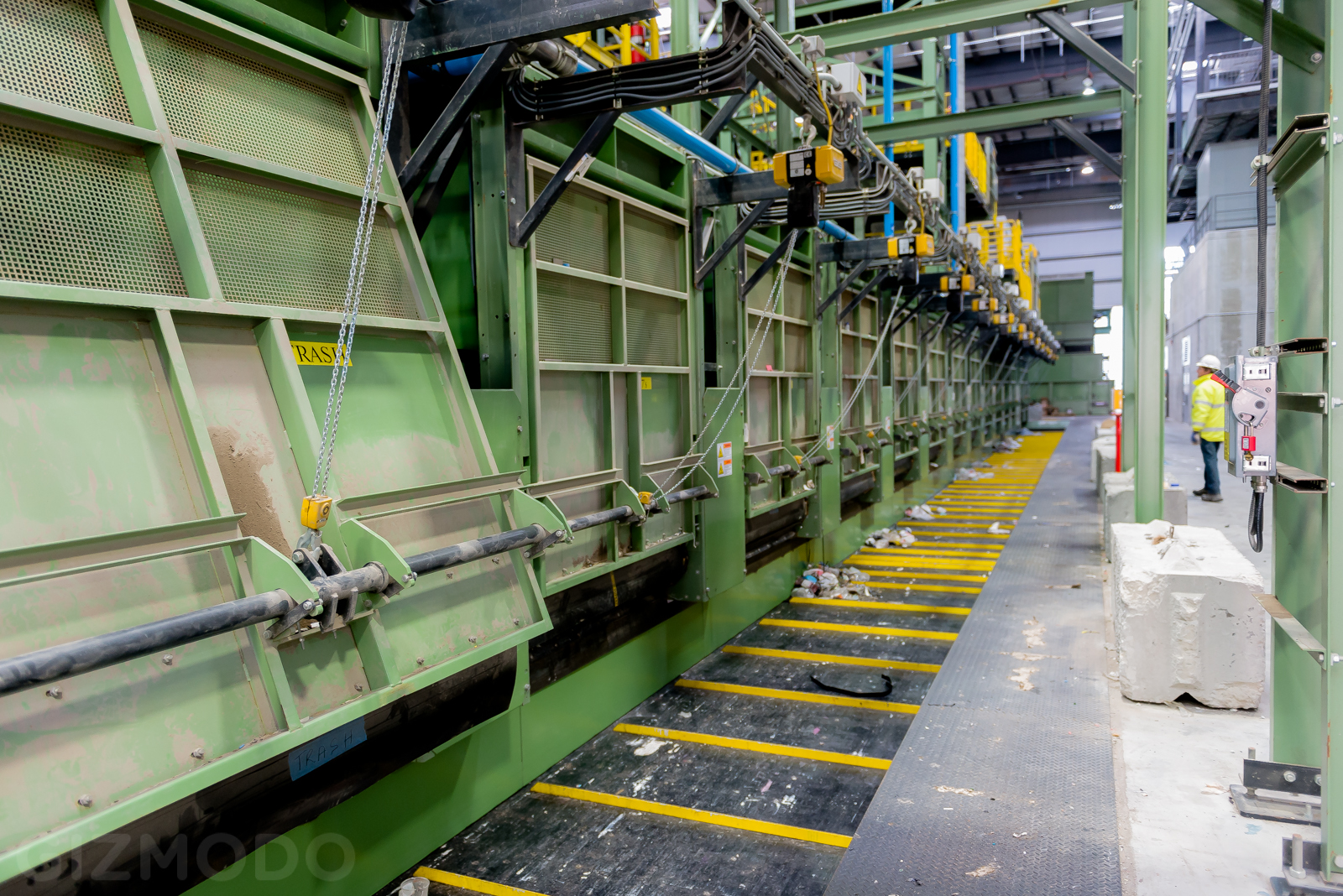
Even with all the drum magnets, ballistics sorters, and shredders, some random objects still manage to make it through — including a lone ski.
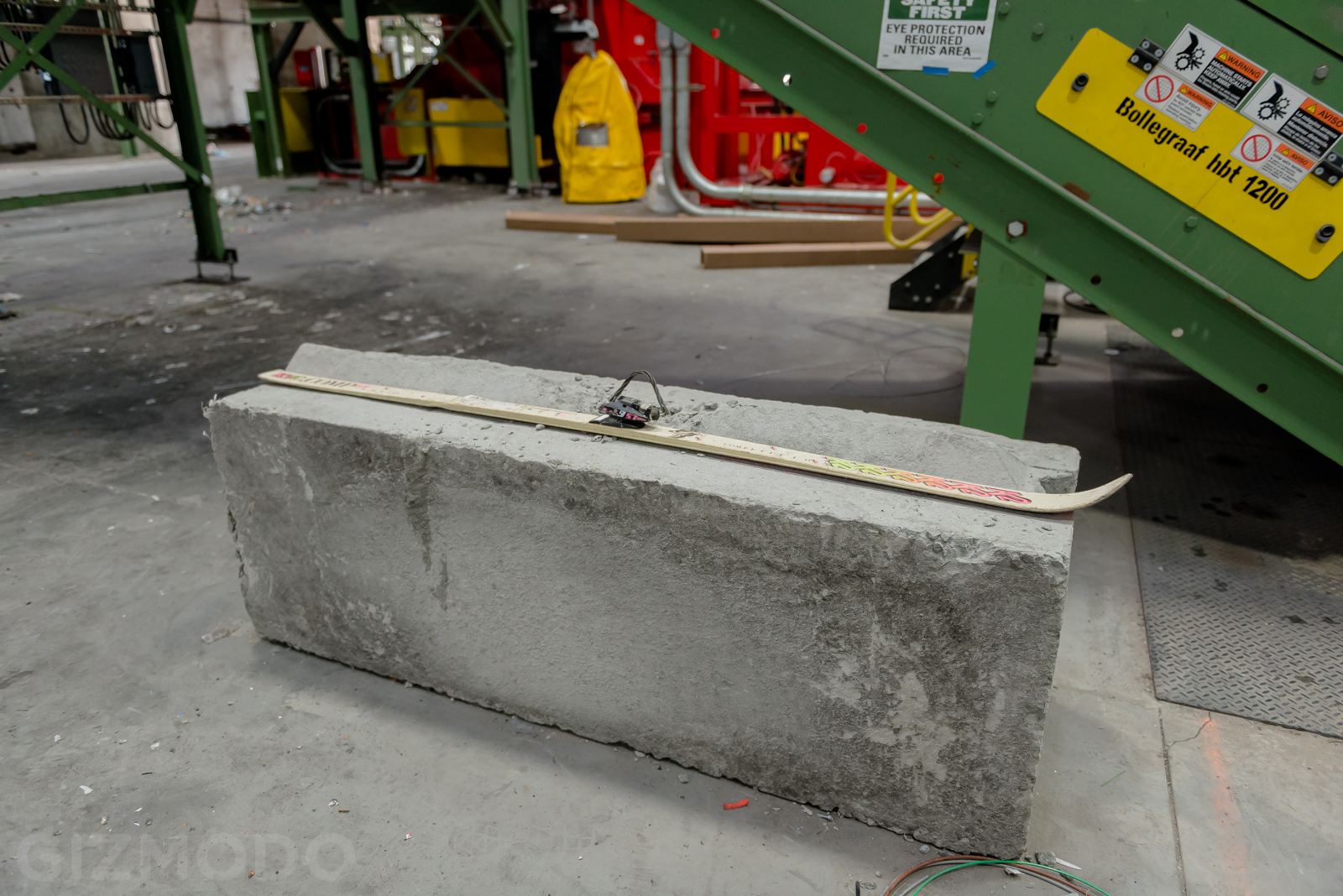
Some bales get processed into a holding bay until tractor-trailers come and pick them up. Bales are sorted by material type, where different plastics go in one corner, aluminium another, and so on.
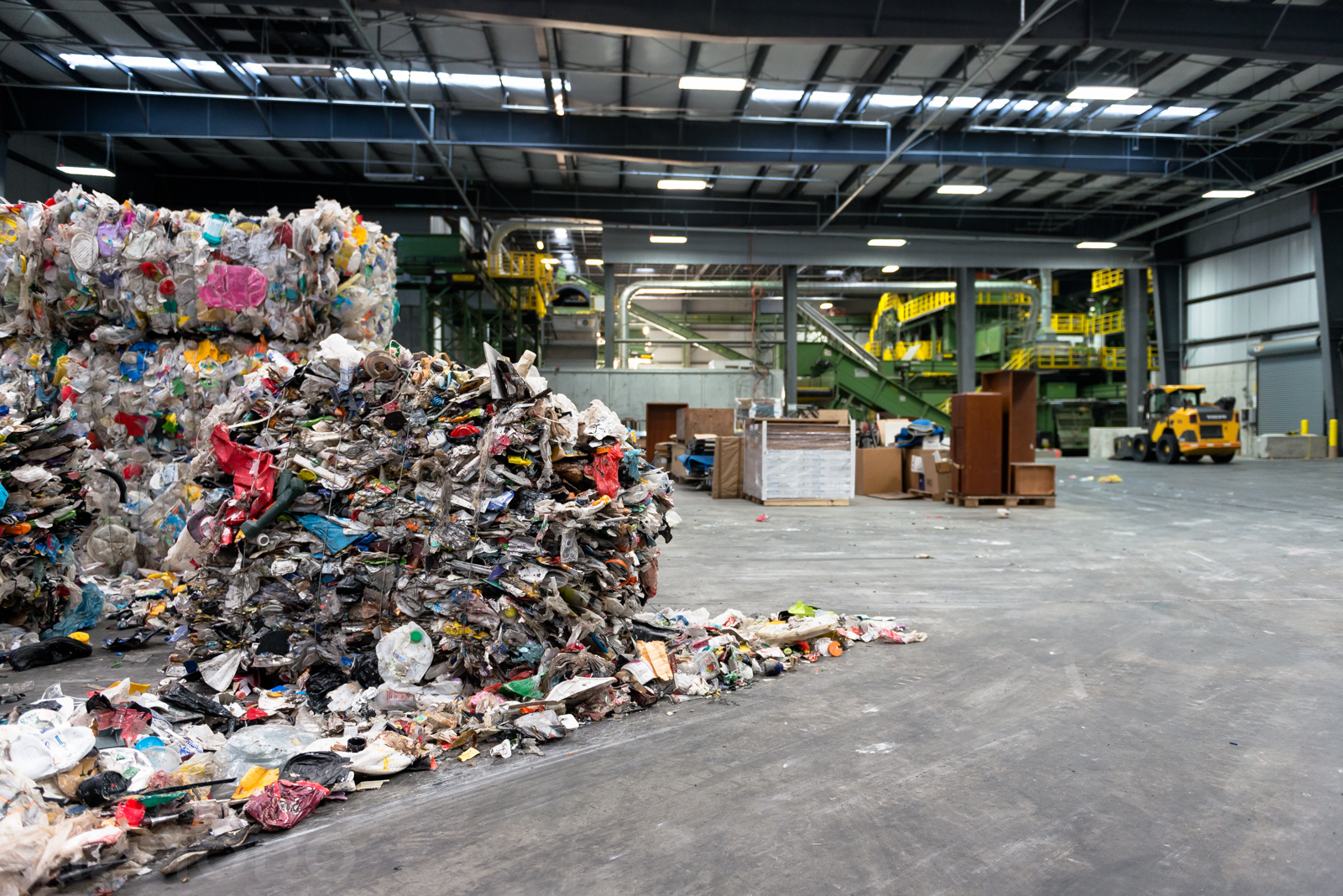

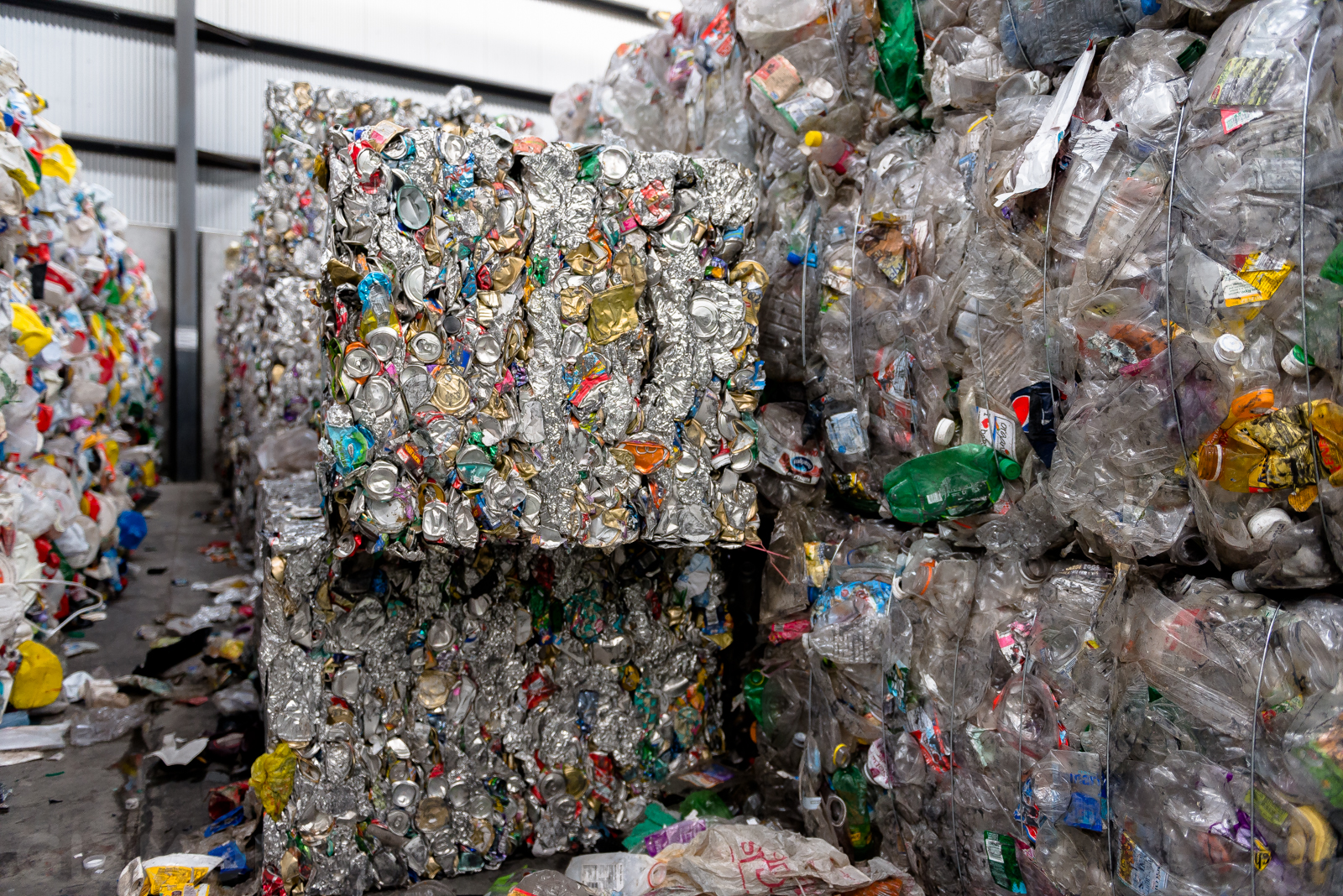
Some conveyor belts send materials directly outside to be baled. These are made ready for easy pickup by train.

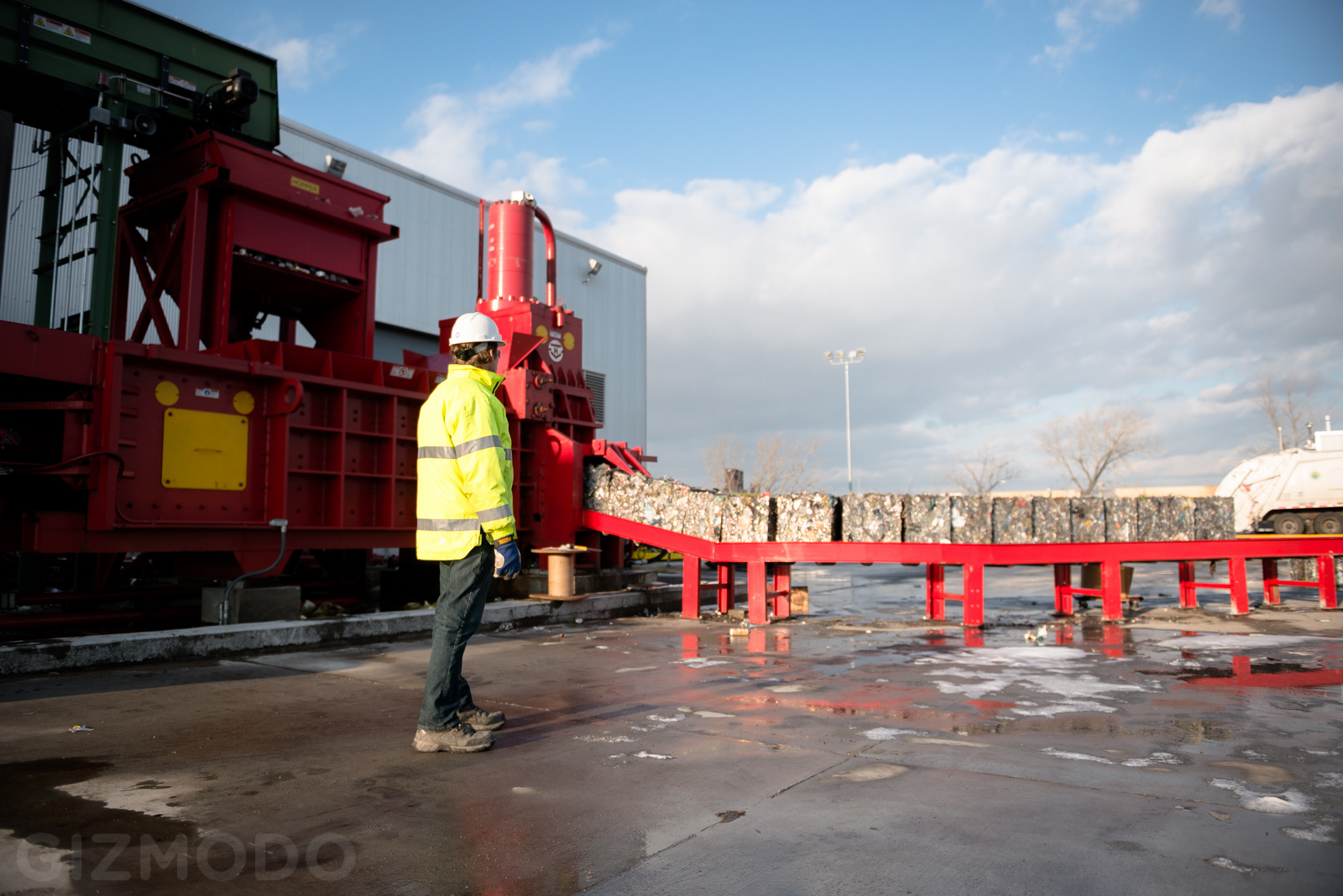
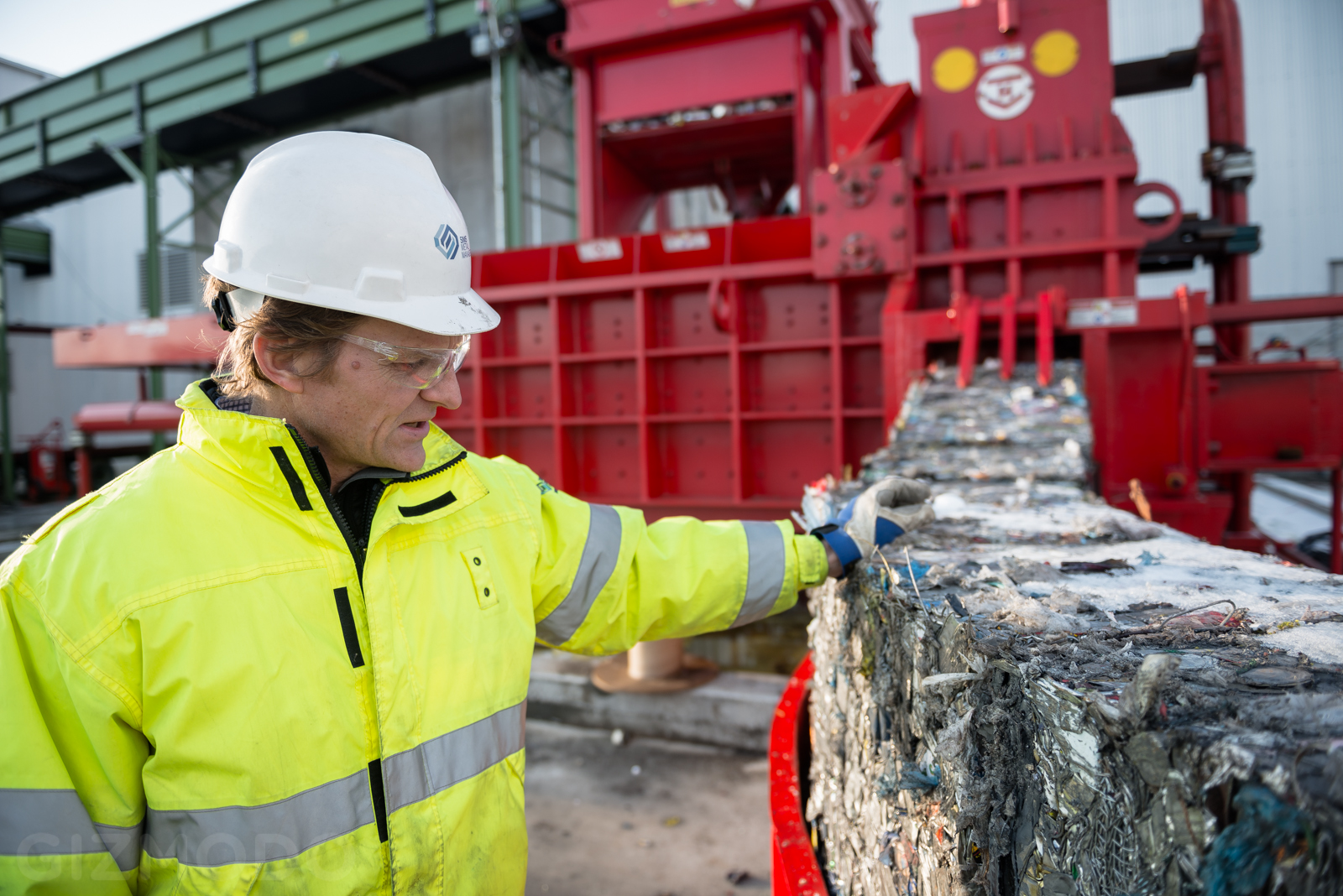
When freight trains enter and exit the facility they must be weighed, just like the trucks and barges. The trains come into the facility through a gate and pass over a pressure plate that measures each axle’s weight as it rolls over.
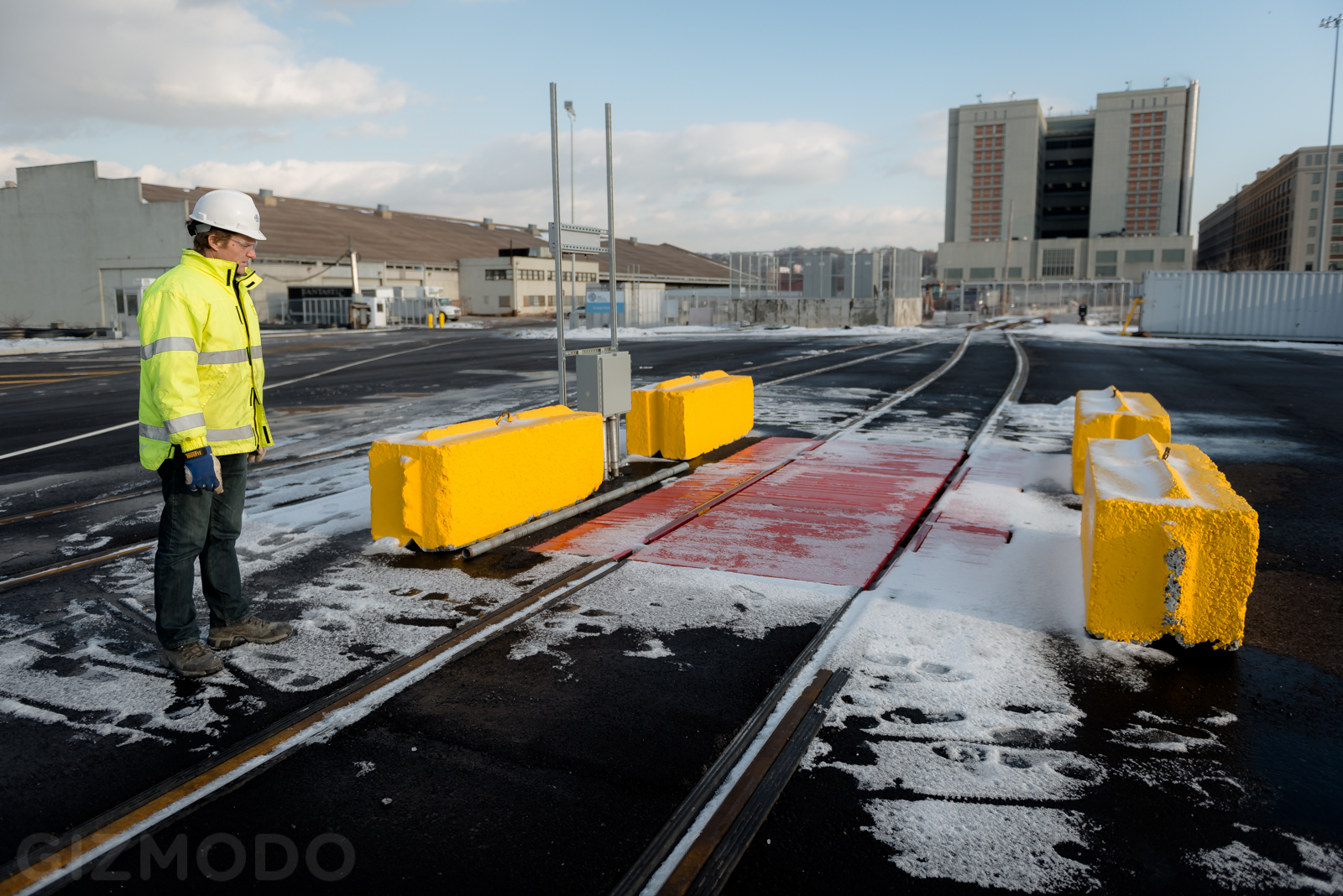
The Future
Sunset Park MRF is capable of processing 1000 tons of material a day, and is set to become the primary recycling facility in the city, thus taking weight off branches in Jersey City and the Bronx. The idea is to import and export materials mostly by barge, in order to reduce the amount of waste truck traffic throughout the city.
Tom Outerbridge says their team of about 70 has some more settling in to do before the facility runs like clockwork; office furniture remains unpacked inside a bay amongst the ready to be shipped bales, for example, while the workers wait for their offices to be finished. However, Outerbridge remains incredibly confident and excited about how productive Sunset Park MRF will be.
